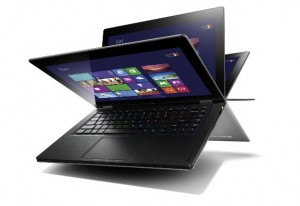 Windows 8 hit the shelves Oct. 26th. This could be called Microsoft’s response to the IPad and many other tablets out there.
Windows 8 hit the shelves Oct. 26th. This could be called Microsoft’s response to the IPad and many other tablets out there.
Windows 8 can be used on both laptops and tablets. With some laptops having touching screens, working as both. This creates a new need for laptop and tablet manufacturers. Now laptops are not only opened and closed repeatedly, they are being pushed and pressed, this creates a new dilemma. They need a hinge that can open and close with ease but also withstand the pressures of constantly being pressed against without completely giving out or moving back.
Computer producers have divisions of engineers designing pivots, joints and connectors for devices running Windows 8. They measure torque, test different gears and springs, and open and shut devices thousands of times.
A worry for both customers and manufacturers is, customers are not going to be happy if the angle of their screen changes every time the touch the screen.
So what are companies doing to make sure this does not happen? Well engineers that specialize in this sort of thing have gone back to the drawing board to come up with new designs to compensate for all this. Companies like Dell, Lenovo, Hewlett-Packard and Acer. Toshiba alone has over fifty patents related to hinges. Jeff Barney, vice president of Toshiba was quoted saying “The hinge is the key to making it work,” and that a bad hinge “is the Achilles’ heel of a laptop.”
So knowing all this what are companies to do? There are some widely-known rules for hinges. Things like never put aluminum and steel on the same hinge. What this does, is cause the hinge to corrode, basically the two metals eat away at each other. Instead, you a substitute and the substitute is Zinc. Zinc, is considered the best metal for laptop hinges, primarily because it is so malleable.
Microsoft’s main Windows 8 device is a tablet with a screen that slides open to reveal a keyboard The goal was to hide the keyboard while in tablet mode.
The first design had a sliding mechanism on both sides of the screen. It was not a working prototype. If one side was pushed harder then the other it would become of balance. The answer to this was a combination of gears and a metal bar that allowed for equal pressure to be distributed no matter where or hard hard the customer pushed.
All this research and worry for something that only adds about $10 to the final cost. But just because it does not cost much, does not mean that it is not important. This is a very important and crucial piece that could keep an indiviual happy or make them want to throw it out the window.